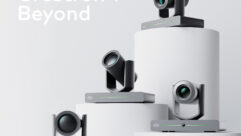
Spec’ing an Install: Keeping the Mission in Mind, Part 1
Dec 11, 2008 11:01 AM,
By Jessaca Gutierrez

Every installation has a budget. It’s the root of many projects that go out to bid. How well you play the numbers game can often mean whether or not your company takes home the prize. But it’s in those numbers that the mission—the original intent and need—of the installation can blur and get lost in price versus function and quality. Which is why when discussing the Sweetwater build with Russ Berger, president of Russ Berger Design Group—the architect and designer for the audio-critical portions of the project—and Steve Barbar, president of LARES Associates, that we let the numbers discussion fall to the wayside. There were more important things to discuss about this installation, such as why the project was ranked as one of the top-five installations in Berger’s little black book of installations. And that’s saying something.
Sweetwater’s new facility is the vision of CEO and president Chuck Surack. “It’s the treehouse of his dreams,” Berger says. When Surack initially contacted Berger, he told him their old facility wasn’t cutting it. Berger explains their old space in Alice and Wonderland affinity. “For us, [initial conversations] started in January [2005]. Chuck called and said, ‘Help! We’re out of room—again!’ He kept adding on to this building where they were. It was very nice, but it was a rabbit’s warren. They kept adding on these bits and pieces, and you’d walk through it, and you’d go up and down, and through a little side thing and then they’d have a hole in the wall and that would lead into a hallway that led down into accounting. It was just a mess,” Berger says with a laugh. “This is a creative bunch of people. Pretty much everyone there is a musician of some sort. We find this all the time: They find ways of using the space that it was never intended to be used, but they just had to make it work.”
Berger asked Surack how he wanted to take care of people. Surack’s sum total of his vision—after much extrapolating on Berger’s part—is a facility akin to Google’s fanasty workplace headquarters in Mountain View, Calif. Sweetwater’s new headquarters in Ft. Wayne, Ind.—completed in February—includes a mall that is open to the public and houses the retail store, a diner, employee club area and video library, concierge service where employees can pick up or drop off their dry cleaning and withdraw money from the ATM, and offices for a variety of professional services—including a hairstyling and massage studio, a photo studio, and a print shop—the Sweetwater Academy of Music for private music lessons; a recording studio; an automated state-of-the-art warehouse; LEED Silver-certified employee offices; a training center; conference rooms; a conference hall for the Performance Theatre overflow and videoconferencing capabilities between the theater and hall, but it’s the Performance Theatre that grabs presentation attention of this structure.
A cornerstone to the Sweetwater success is providing its employees with technical training to stay abreast of the latest technology and products. Designed for formal lecture and demonstrations, the Performance Theatre includes all the usual accompaniments, but fulfilling Surack’s mission meant going beyond the norms. As such, the theater has become a multifunctional space that can host not only the company’s twice-weekly intensive trainings and lectures, but also full-scale rock concerts. To do so required jaw-dropping audio systems that are only seen in some of today’s concert halls and video systems seen in video production suites installations. The space has four different sound systems: a flown JBL array, a 7.1 surround-sound system, an audio output headphone jack at each of the 250 seats that ties into the recording studio system so that employees can hear a set as it’s being done there, and finally, the LARES (Lexicon Acoustic Reinforcement and Enhancement System) that Barber and Berger describe as the icing on the world’s best cake.
“LARES uses 105 dedicated loudspeakers positioned throughout the theater to alter the perceived acoustics,” Barber says. “The system generates direct, reflected, and reverberant sound that electronically emulates different architectural geometry and surface treatments, providing optimum conditions for a wide range of performances. The system even has the ability to provide differing conditions for the musicians onstage and participants in the audience. This allows the theater to effectively accommodate acoustical sources like a jazz ensemble, string quartet, choral group, or even an orchestral ensemble. LARES also takes surround sound to another level. Instead of just a few surround-sound speakers on the side walls, LARES provides an immersive surround experience.”
In a YouTube video, Troy Hartmen demonstrated the capabilities of the system, making it go from a dead, sterile space to a space the size of the Grand Canyon. The system may seem like overkill for a space primarily dedicated to modest lectures, but it’s the opportunity for growth that the system provides and the vision Surack originally had for wanting a system such as LARES. The Performance Theatre, with all its capabilities, means that it can be host to the local performing arts community—one of the original intents of Surack’s mission. When asked about the conversation between Surack and Barber and how they came to decide on such a system, Barber says Sweetwater blazed its own trail on the deciding process.
“Our typical process is usually when working on say a concert hall, you’re working with an orchestra,” Barber says. “If you’re working with an opera, well, it’s an opera. If you’re working with a church, well, we may have an organ and a choir. With Sweetwater, it was, ‘Well, we kind of do this, and we want to do everything else—and we don’t do that currently, but we want to be able to do it.’ It has been an an interesting process whereby there’s no sidewalk. Imagine there’s a bunch a grass; there’s no sidewalk yet, but they’re starting to wear a path. And where the grass begins to die off, that’s where to go next.”
“You have to go back to all the initial conversations with them about what they wanted to accomplish, and originally, they were literally in this dungeon space that had like 7ft.-8ft. ceilings,” Berger says. “It was just horrible. There were low ceilings, big large open area, and it sounded bad; it looked bad; it felt bad; it was oppressive, yet these people would file in there twice a week for these training sessions, enthusiastic and eager to learn. The space was working against them. Chuck wanted something more.”
If you’re doing a lecture theater, typically you want it to be very dry. It has to be dry if you want good articulation, meaning good intelligibility where you can tell Bs from Ds from Ts, where somebody is speaking you can really clearly understand what they’re saying. And also if you are demonstrating fine little nuances in software, in instruments, in equipment, and the manufacturer is trying to demonstrate this to the users in the room, they have to be able to hear it. I know what this system is capable of, and we designed the room specially to have this system in it, so that we are able to get all these varying requirements in there. Usually someone says, ‘You can have this or this. Pick two, but you can have all three of the requirements you want.’ With this system, designed this way, now they can accommodate virtually any kind of instrumentation, any kind of music, and any kind of stage presentation, lectures—all of this. When that was presented to Chuck about what he would be able to do with this, all of sudden he goes, ‘That’s exactly what I want. I can have everything.’ It’s not an inexpensive system. It’s a serious commitment, but the reason he made this commitment is because it allowed him to have all the mission.”










